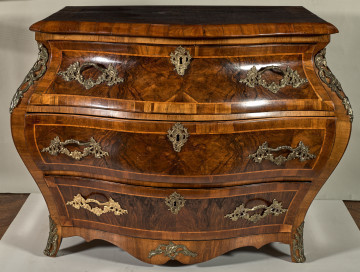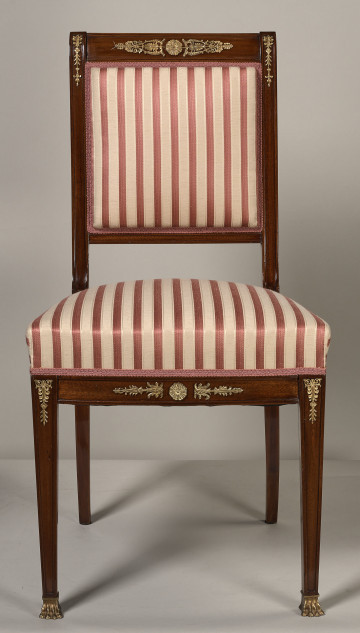
A la tombeau
18th century
Castle Museum in Łańcut
Part of the collection: Furniture and interior furnishings
Gervais Maximilien Eugène Durand (1839-1920), born in Paris and considered the leading French ébéniste of the 2nd half of the 19th century, was the author of the presented cabinet. He worked in the period focused on the imitation of historical styles. He started his own workshop in 1870 on Rue de la Cerisaie in Paris. He signed his works with the inscription "G. DURAND". He was not only the maker, but also the designer of his products. The ébéniste gained renown at the 1889 Universal Exhibition, where he received a silver medal. Since then, he worked to meet the growing demand for furniture modelled on the styles of past eras. He executed numerous commissions, making almost exclusively copies of the French master craftsmen from the 17th and 18th centuries or close interpretations of them. Among other things, he copied André-Charles Boulle's (a famous 17th/18th-century ébéniste) furniture, very fashionable in the 2nd half of the 19th century. In 1902, Durand's son Frédéric Louis entered into a partnership with him; after the death of his father in 1920, he took over the workshop and ran it until 1933, continuing to make copies of the works of the old master ébénistes. The presented cabinet is a close imitation of a late Rococo piece of furniture with early Classicism features. Edited by Teresa Bagińska-Żurawska https://orcid.org/0000-0002-9243-3967
Author / creator
Dimensions
height: 76 cm, width: 52 cm
Object type
Furniture and interior fittings
Technique
inlaying
Material
bronze, wood
Creation time / dating
Creation / finding place
Owner
Castle Museum in Łańcut
Identification number
Location / status

18th century
Castle Museum in Łańcut

1st half of the 20th century
Castle Museum in Łańcut

1st half of the 20th century
Castle Museum in Łańcut
DISCOVER this TOPIC
National Museum in Lublin
DISCOVER this PATH
Educational path